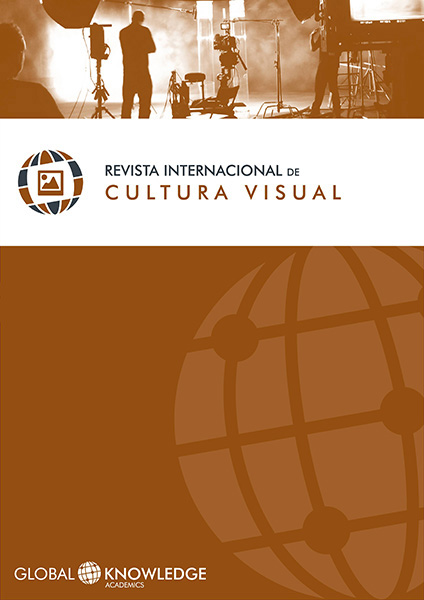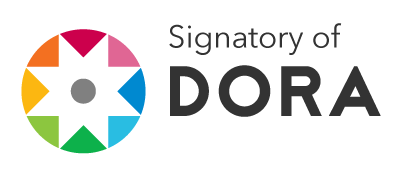The reenchantment of Digital Image: "Commercial Cuts" by Daniel Martínez through the "proposals" by Italo Calvino
DOI:
https://doi.org/10.37467/gka-revvisual.v5.1519Keywords:
Commercial Cuts, Italo Calvino, Digital Art, The Infrathin Image, ReenchantmentAbstract
This article engages with Daniel Martinez's Commercial Cuts, a video animation of the homonymous book of poems by the Spanish writer Javier Moreno. Commercial Cuts, I will discuss, is a videopoetic narrative on the mythical promise of salvation exercised by our world of adverstising. Following Italo Calvino's memos, and featuring the photograms from Martinez's narrative, I will discuss how this narrative ultimately emerges as a visual poetics that defends a recuperated mythical impulse of continuity for the contemporary visual regime. With it, it manages to overcome one of main blind spots of postmodernity: the negation of the mythical perspective.
Downloads
Global Statistics ℹ️
|
523
Views
|
131
Downloads
|
|
654
Total
|
|
References
Ardizzione, M.L (2002). Guido Cavalcanti: the other Middle Ages. Toronto; Buffalo : University of Toronto Press. DOI: https://doi.org/10.3138/9781442675568
Benjamin, W. (2003), Selected Writings, 1938-1940, Cambridge, MA: Belknap Press of Harvard University Press.
Boehm G. and Mitchell W.J.T. (2010). Pictorial versus Iconic Turn: Two Letters. The Pictorial Turn. 8-26.
Brea, J.L. (2010), Las tres eras de la imagen, Madrid: Akal.
Broeckman, A. (2007), “Image, Process, Performance, Machine: Aspects of an Aesthetics of the Machinic” in Mediaarthistories. Cambridge, MA: The MIT Press, pp 193-205.
Calvino, I. (1988), Six memos for the New Millennium, Cambridge, MA: Harvard University Press.
Debray, R. (1996). El arcaísmo postmoderno. Lo religioso en la aldea global. Monterrey: Manantial, 1996.
Deleuze, G. and Guattari F. (1987), A Thousand Plateaus: Capitalism and Schizophrenia, London & New York: Continuum.
Gell, Alfred (1992), The Technology of Enchantment and the Enchantment of Technology. En: J. Coote and A. Shelton (eds.), Anthropology, Art, and Aesthetics. (pp. 40-63). Oxford: Clarendon Press.
Francalanci, E. (2010) Estética de los objetos. Boadilla del Monte, Madrid: Machado Libros.
Jacob, J. (1998), Calvino's Reality: Designer's Utopia. Utopian Studies 9, 103-117.
Lyotard, J. & Blistène B (1985), A Conversation with Jean-François Lyotard. Flash Art, 32-39.
Manovich, Lev (2007), “Abstraction and Complexity” in MediaArtHistories, Cambridge, MA: MIT Press, pp-340-354.
Martínez, D. Notes from Cortes Publicitarios. Unpublished.
Mitchell, W. J. T. (2007). “There are no Visual Media.” Mediaarthistories. Cambridge, Mass; London: The MIT Press, 2007.
Mora, V.L. (2009). Letras sin imprenta. Ciberliteratura, blogs, narrativas cross-media.En F. Rico, J. Gracia y A. Bonet, España Siglo XXI. Literatura y Bellas Artes (313-356). Madrid: Biblioteca nueva.
Moreno, J. (2006), Cortes publicitarios, Madrid: Devenir.
Sloterdijk, P. (2011), Neither Sun nor Death, Los Angeles: Semiotexte.
Warburg, A. (2005). El ritual de la serpiente. Madrid: Editorial Sexto Piso, 2010.
Weber, Max (2005), The Protestant Ethic and the Spirit of Capitalism. London and New York: Routledge. DOI: https://doi.org/10.4324/9780203995808
Downloads
Published
How to Cite
Issue
Section
License
Those authors who publish in this journal accept the following terms:
-
Authors retain copyright.
-
Authors transfer to the journal the right of first publication. The journal also owns the publishing rights.
-
All published contents are governed by an Attribution-NoDerivatives 4.0 International License.
Access the informative version and legal text of the license. By virtue of this, third parties are allowed to use what is published as long as they mention the authorship of the work and the first publication in this journal. If you transform the material, you may not distribute the modified work. -
Authors may make other independent and additional contractual arrangements for non-exclusive distribution of the version of the article published in this journal (e.g., inclusion in an institutional repository or publication in a book) as long as they clearly indicate that the work was first published in this journal.
- Authors are allowed and recommended to publish their work on the Internet (for example on institutional and personal websites), following the publication of, and referencing the journal, as this could lead to constructive exchanges and a more extensive and quick circulation of published works (see The Effect of Open Access).













